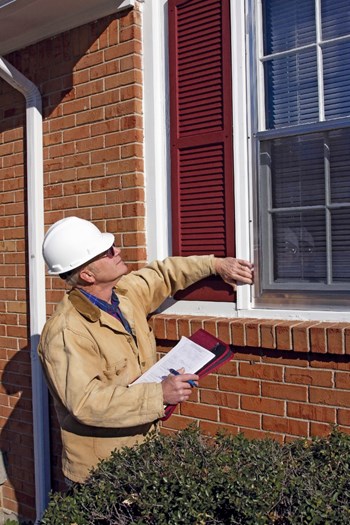
Afire sweeps through a row of condominiums, some of them partially-built units that were caught in the financial downturn. What happens when empty condo units, finished or otherwise, suffer damage? Who pays to rebuild them?
According to Pat Quinn, a principal in Quinn Group Insurance Agency, Inc. in Arlington, Massachusetts, at least one carrier provides specialty coverage on properties referred to as “idle assets.” The coverage, which protects whoever owns the vacant units, can be purchased on an annual basis or for a specified number of years, depending on how long the units will be empty.
And what about condos built decades ago that are damaged today? Where does the money come from to pay the considerable expense of bringing them up to 2009 building codes? The answer, according to Quinn, is another type of specialty insurance: “ordinance and law” coverage.
Range of Specialty Insurances
Outside of the condominium master policy, there is a whole range of specialty insurances that association boards and unit owners need to understand and carry, so they’re not left with unexpected rebuilding and repair expenses from any variety of scenarios.When an older condo is damaged, master policies do not automatically include any provision for building code updates. These newer requirements may substantially increase replacement costs if a rebuild is needed. Ordinance and law coverage, Quinn states, “is essential for buildings from the 1960s, ‘70s and older. It’s one of the most important coverages. The codes are completely different now. You have to purchase ordinance coverage separately; it’s an industry standard [that is used] even if a building is onlyfive years old.”
For instance, he adds, “Now, in Massachusetts, all electrical receptacles have to be child-proofed.” Regulations can vary from city to city as well. “In Cambridge,” Quinn notes, “we just evaluated an old apartment building, built around 1910, and we informed the trustees that, by local ordinance, if over 40 percent of the building is destroyed [then] you have to knock the whole building down.” So a policymust be adequate to cover that “total loss” possibility. Not only that, states Quinn, “but debris removal needs its own coverage.”
He warns that “if you don’t buy extended coverage, you may not be able to replace everything. Many items are not addressed in a master policy. For instance, if there are in-ground oil tanks on the property, it might be tough to provide coverage [and] it’s probablycheaper to just pull the tanks out.”
In general, when at least half of a structure is destroyed –typically by fire, “It must be rebuilt to current building and fire safety codes,” states Robert Thorell, a building commissioner in Westminster, Massachusetts. Over the years, the state’s codes have also added stricter requirements for sprinkler systems.
Also, “if you have a fossil fuel heating appliance,” Thorell adds, “carbon monoxide detectors are required. This is in addition to hard-wired smoke detectors, with battery back-up, that have been a code requirement since 1997.” He advises contacting the localfire department, as well, when any building project is slated, since “any substantial rehab or rebuild requires an upgrade to meet the newest code.”
It’s especially important to communicate with local building inspectors and fire chiefs, because codes are different from state to state and even from town to town.
Noxious Spill Coverage
Jeff Grosser, a principal in Rodman Insurance of Needham, Massachusetts, points out that a master policy should be scrutinized to see if it provides special coverage for building equipment failures, or for environmental mishaps. “What if a barrel of pool chemicals ruptures in the maintenance shed? The coverage that is outlined in the master policy should cover the cost of cleanup as well as liability for any physical damage,” he notes.
Another option Grosser points out is that associations can lock in a guaranteed premium. “This is something I think is of value for customers. Since the insurance market is cyclical by nature, insurance companies [tend to] raise rates when the investment market goes down. We have one carrier that is offering associations this [special] optionof a fixed premium for three years.”
As to actual replacement coverage, Grosser points out that “most carriers will evaluate adequate building replace-ment cost on an annual basis. Some-times this estimate is extended to 125 percent of the building’s value, as a cushion of extra coverage.” Keeping upwith changing needs of the community’s physical plant is a task for an association’s insurance agency, Grosser adds. “We think communication and education are essential… We attend unit owners’ meetings and we understand the marketplace.”
Vincent Hager, president of JGS Insurance in Holmdel, New Jersey, reports that insurance policies have re-oriented to accommodate the real estate market downturn. “I’ve seen a tightening of the underwriting,” he says. “Some policies now exclude units vacant for more than 30 or 60 days. This begs the question of how ‘vacant’ is defined… does it mean unoccupied on a seasonal basis? The other issue is when a community has more than 25 to 30 percent of its units becoming rentals. This can lead to rates going up.”
He agrees with Grosser that building equipment such as the mechanicals and utilities are usually covered in the master policy as part of a package. However, there are instances, he concedes, when “a separate policy for equipment mightbe less expensive” depending on rates from different carriers and specific types of equipment.
Hager notes that with his clients, the ordinance and law coverage “is very popular, even for new buildings.” He points out situations such as one claim of over $1 million on an older building that had to be retrofitted with a sprinkler system. One area often excluded from master policies, he reports, “is for environmental damage or liability… Coverage for these [accidents] is almostalways sold separately.”
Opportunities for saving money on insurance premiums are available when a community makes an effort to “go green.” [See sidebar]. Hager says that some carriers offer a discount of anywhere from five to 15 percent for coverage on buildings that have achieved certification by the U.S. Green Building Council’s LEED [Leadership in Energy & Environmental Design] program. A community can get extra coverage if they rebuild up to LEED specifications.
This certification results from various energy-saving techniques used during construction that promote environmentally-friendly construction and building operations. It is, therefore, used most often with new construction, although rehabs and retrofits of older buildings could earn enough LEED points to qualify for discounts. Typically, LEED points are given for everything from site selection [such as brownfieldredevelopment] to using captured rainwater.
Marie Auger is a freelance writer and a frequent contributor to New England Condominium magazine.






Leave a Comment